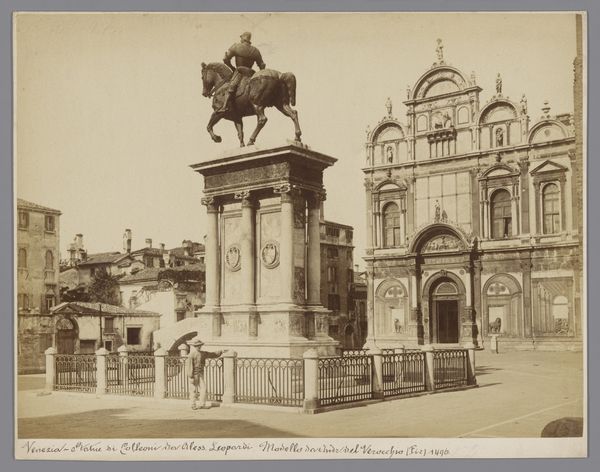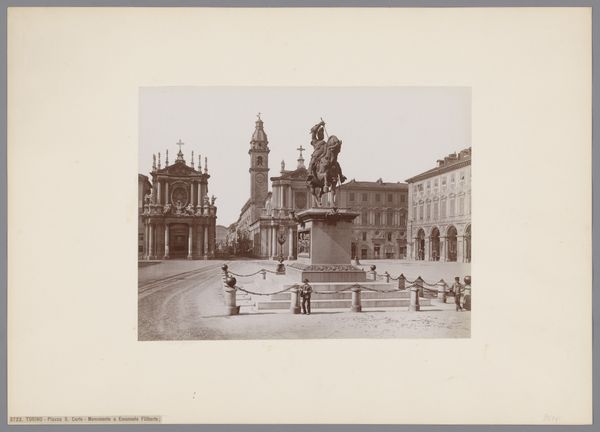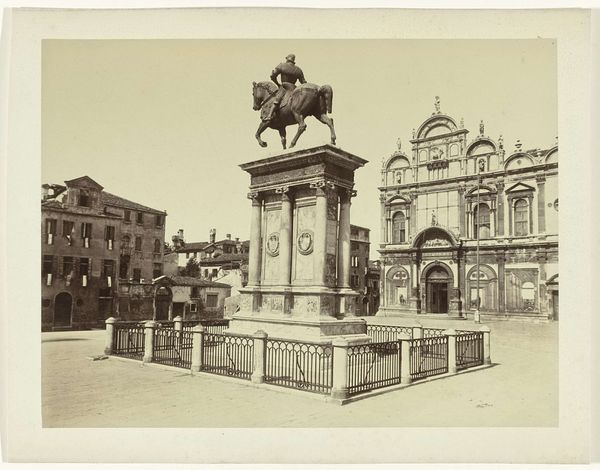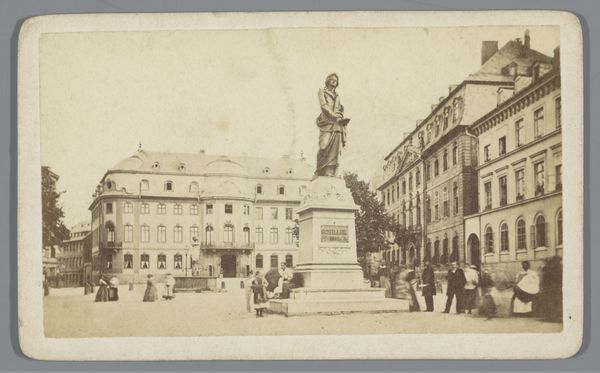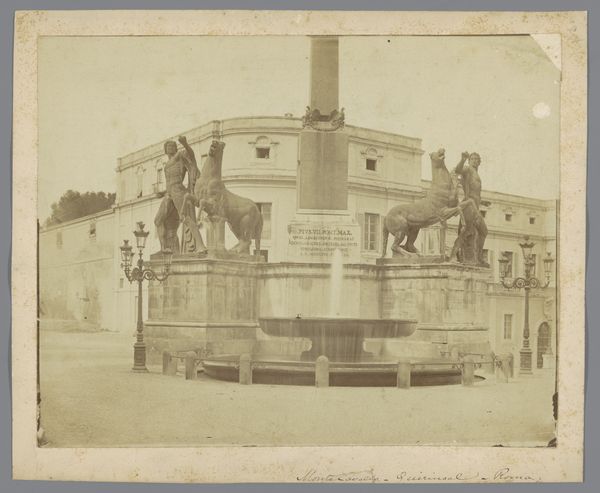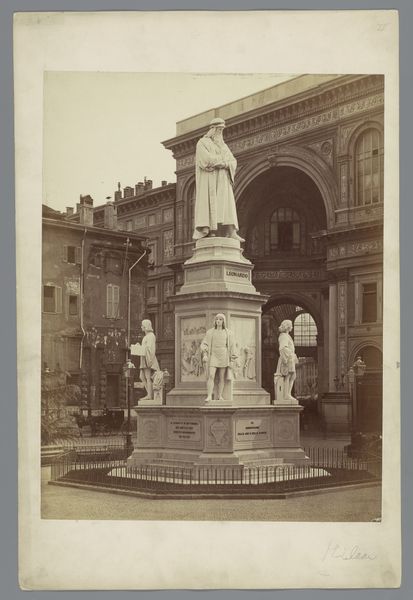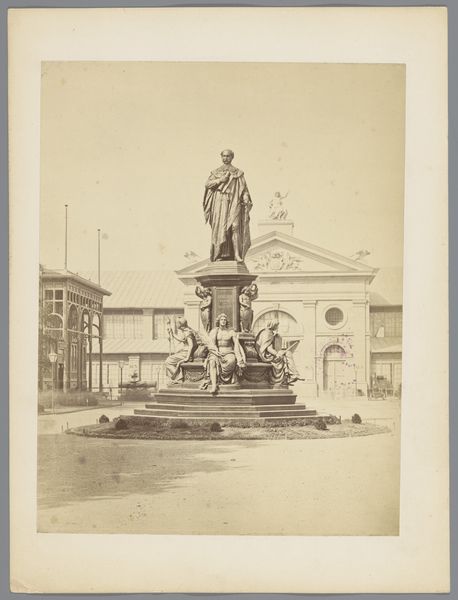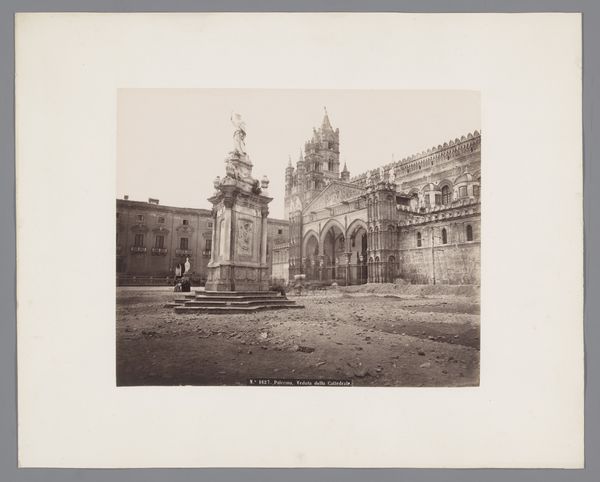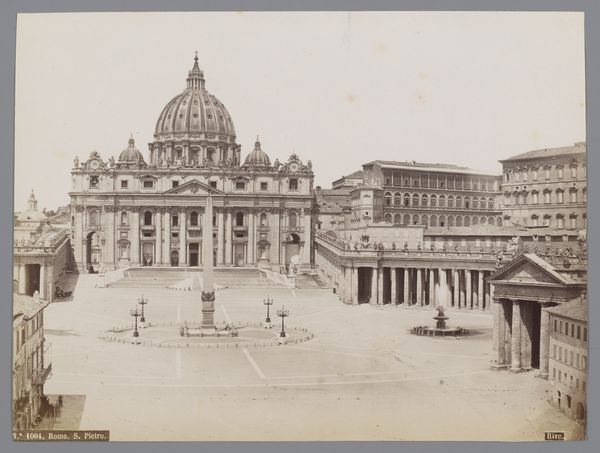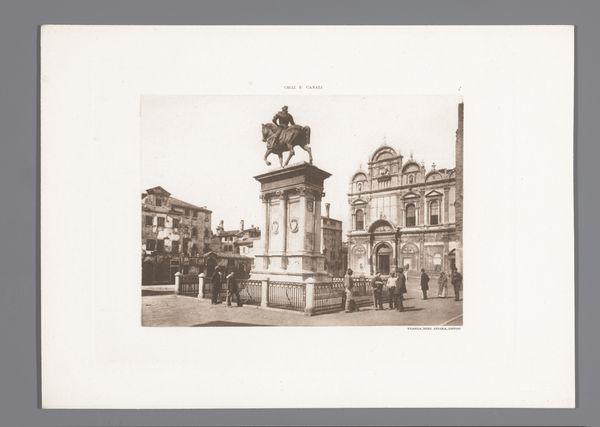
Gezicht op het Piazza San Carlo in Turijn met het ruiterstandbeeld van Emanuel Philibert van Savoye c. 1860 - 1885
0:00
0:00
print, photography, albumen-print
#
portrait
# print
#
photography
#
cityscape
#
italian-renaissance
#
albumen-print
Dimensions: height 100 mm, width 136 mm
Copyright: Rijks Museum: Open Domain
Curator: This is a photograph titled “Gezicht op het Piazza San Carlo in Turijn met het ruiterstandbeeld van Emanuel Philibert van Savoye,” which translates to “View of the Piazza San Carlo in Turin with the equestrian statue of Emanuel Philibert of Savoy." The albumen print, made by Giovanni Battista Maggi, likely dates between 1860 and 1885. What's your first take? Editor: Stark elegance comes to mind. The tones are muted, almost sepia. You have this vast, almost deserted piazza, anchored by the dark mass of the statue. The formality of the architecture in the background really amplifies the monumental feel of the space. Curator: Precisely. Maggi captures the political theatre inherent in urban design. Piazza San Carlo was, and remains, a symbol of Savoyard power and control in Turin. The statue of Emanuel Philibert isn’t just a decoration; it’s a deliberate projection of dynastic authority and martial prowess. The carefully framed cityscape projects an image of unified control. Editor: Right, and it is key to notice that an albumen print creates this hyper-detailed scene. You have to think about the labor and technique involved – coating the paper, long exposures in bright light. There’s this craft element, almost a tension between the artistic composition and the industrial aspects of photographic reproduction at the time. Photography's industrial impact shaped Turin’s self-image, democratizing art even as the subject matter solidified political power structures. Curator: Absolutely. This image would have circulated widely, not only as art but as propaganda, helping to normalize and reinforce the Savoyard dynasty’s image as enlightened rulers, bringing modernization and stability. Editor: The print medium adds a certain dimension to the politics involved. It's not just a painting displayed in some aristocratic salon. It’s reproducible, distributed to various social classes, each maybe viewing a different angle, interpreting a slightly shifted story of what Savoyard power stands for. Curator: In fact, mass reproductions such as this would allow the grandeur of Turin to be disseminated even to those who might never have seen it. What could be read as the lack of many civilians in the shot now perhaps aided a clean display of power that felt very composed. Editor: True, its aesthetic choices were crucial. This really underscores how artistic production isn't just some detached aesthetic exercise, but fundamentally entwined with labor, material conditions, and socio-political goals. Thanks for sharing! Curator: A valuable lesson, it appears, for us all.
Comments
No comments
Be the first to comment and join the conversation on the ultimate creative platform.
